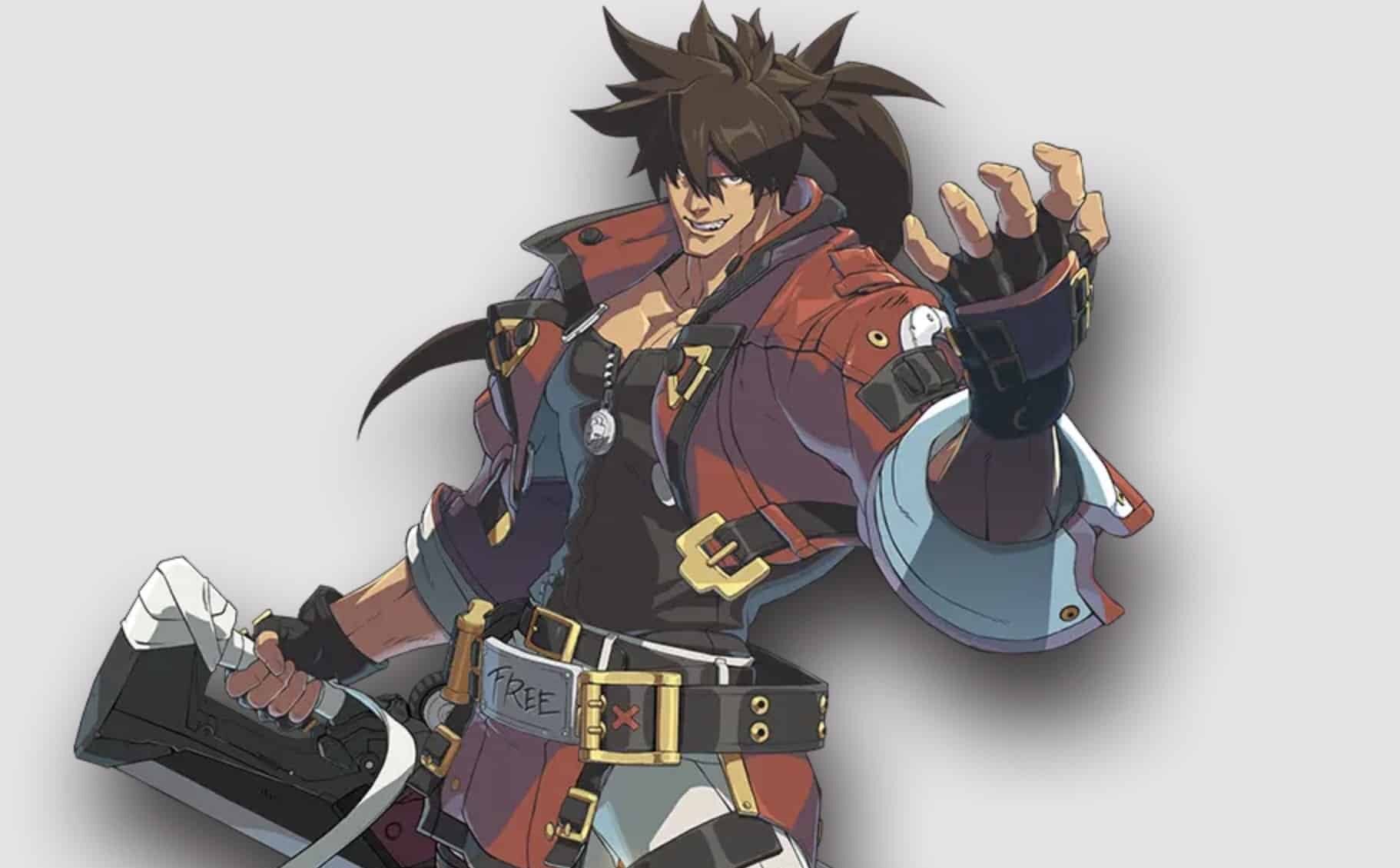Guilty Gear is both a little-known and widely-loved fighting game series. It started in the late 90s, after the success of many other fighting game series. Most of the franchise’s style resembles Street Fighter, with manga influences added. There are 24 titles under the Guilty Gear banner as well as mangas, novels, and audio stories. Despite all this content, the game is seemingly not as widely known, at least in the West, as other fighting games that have been going on for a similar span. The games are well-liked and often have good reviews. Standout characteristics of the series include exciting and technical gameplay, vivid graphics, rock soundtracks, and many interesting characters.
Guilty Gear Playable Characters
- A.B.A.
- Anji Mito
- Answer
- Asuka R. Kreutz
- Axl Low
- Baiken
- Bedman
- Bridget
- Chipp Zanuff
- Dizzy
- Dr. Paradigm
- Elphelt Valentine
- Fanny
- Faust
- Giovanna
- Goldlewis Dickinson
- Holy Order-Sol
- Happy Chaos
- I-No
- Izuma
- Jack-O’ Valentine
- Jam Kuradoberi
- Johnny
- Justice
- Kliff Undersn
- Ky Kiske
- Kum Haehyun
- Leo Whitefang
- May
- Millia Rage
- Nagoriyuki
- Potemkin
- Ramlethal Valentine
- Raven
- Robo-Ky
- Sin Siske
- Slayer
- Sol Badguy
- Testament
- Valentine
- Venom
- Zappa
- Zato-1
Guilty Gear Games Breakdown
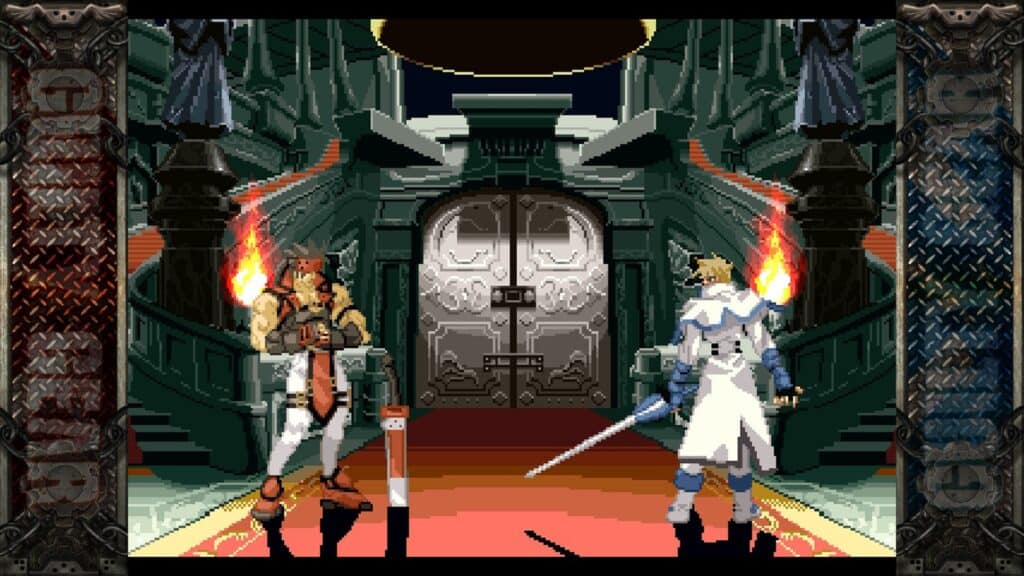
The 7 major games in the series:
- Guilty Gear
- Guilty Gear X
- Guilty Gear XX
- Guilty Gear 2 -Overture-
- Guilty Gear Xrd -Sign-
- Guilty Gear Xrd -Revelator-
- Guilty Gear Strive
The 8 Spinoffs Games:
- Guilty Gear Petit
- Guilty Gear Petit 2
- Guilty Gear Isuka
- Guilty Gear Dust Strikers
- Guilty Gear RoA
- Guilty Gear Judgement
- Pro Jumper! Guilty Gear Tangent!?
- Guilty Gear Vastedge XT
Other Entries
- Guilty Gear X Plus
- Guilty Gear X Advance Edition
- Guilty Gear X ver 1.5
- Guilty Gear XX #Reload
- Guilty Gear XX Slash
- Guilty Gear XX Ʌ Core
- Guilty Gear XX Ʌ Core Plus
- Guilty Gear XX Ʌ Core Plus R
- Guilty Gear Xrd Rev 2
Guilty Gear Background
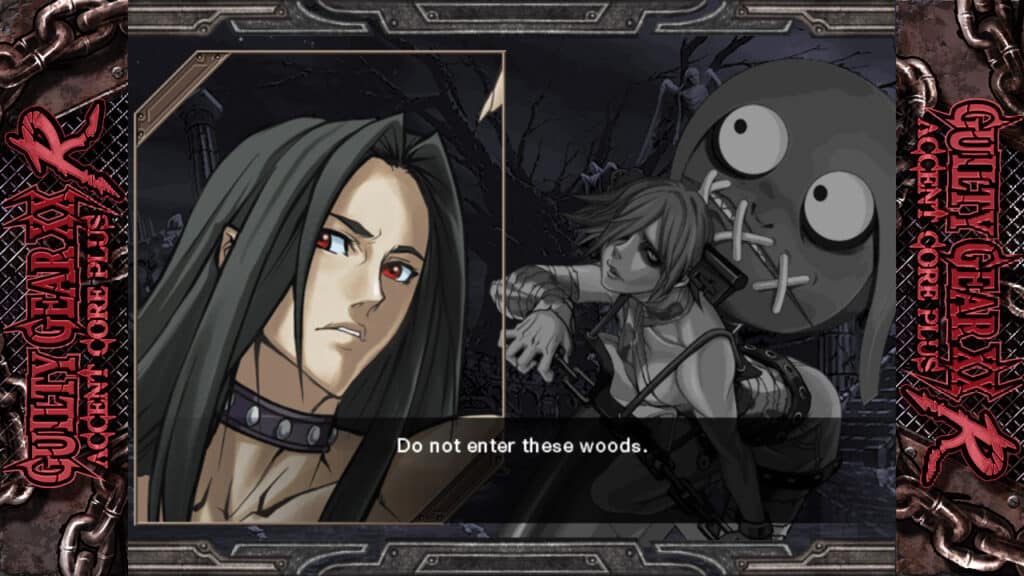
The rest of the games include a series of spinoffs and more minor releases that are either Japan exclusives or updates to other titles, sometimes almost like DLC content. The first game in the series Guilty Gear debuted in 1998, and the most recent game Guilty Gear Strive released just a few years ago in 2021. All the games in the series come from delevoper Arc System Works. Since the games span such a long period, they have been released on and made available for many consoles, beginning with PlayStation 1.
The series’ story is continuous throughout its game titles and other formats. The story occurs in a post-apocalyptic world where magic has replaced modern technology. Humans are in a constant war against artificial beings called Gears. The main character throughout the games is Sol Badguy, who, despite his name, is the series’ protagonist. Sol is a bounty hunter seeking out and fighting the Gears he helped create to try and atone for bringing them into the world. One of his main traits is that he is a massive fan of the band Queen. This fact coincides with the hard rock and heavy metal that fuels the games and is often directly referenced in the stories.
Guilty Gear Games in Release Order
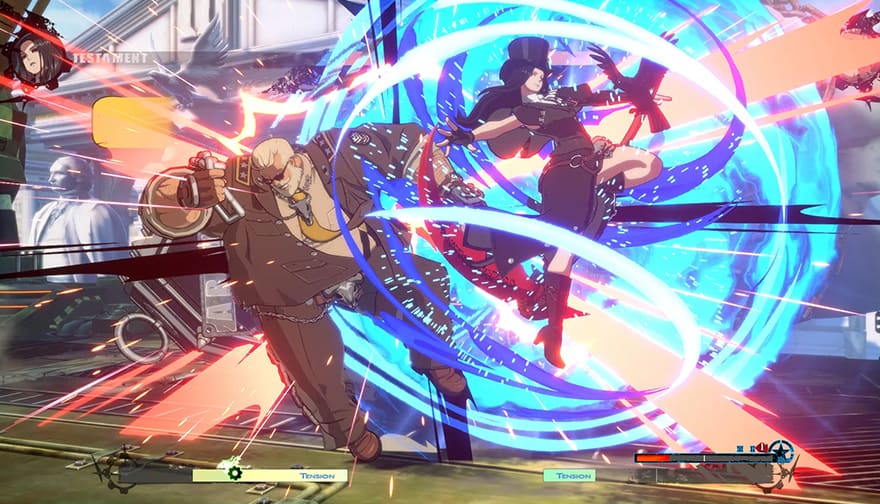
Guilty Gear (1998)
The original game that started the franchise was released on PlayStation 1 but is now available for Switch, PlayStation 4, and Windows. This entry is a 2D fighting game that begins with ten playable characters. The setting is the year 2180, where humans battle against Gears, beings intended for evolution but used for war. An interesting aspect of this game is the Instant Kill option, done with a combo of buttons. If the hit lands, you instantly kill the opponent and end the match.
Guilty Gear x (2000)
The second game in the series is available on Sega Dreamcast, PlayStation 2, Windows, Game Boy Advance, and Arcade. This game continues the story and style from the first, adding more characters and gameplay options. The characters’ looks got an overhaul for this game that stays with them for the rest of the series. Guilty Gear X adds a survival mode to the game and adjusts the Instant Kill to be less effective.
Guilty Gear Petit (2001)
Petit is the first handheld title in the game series and only released in Japan. It is available only on WonderSwan Color, which is essentially the Japan-only version of Game Boy. This version is a 2D fighting game with seven playable characters. The fighters are distorted versions of their classic selves to fit the handheld format. One of these characters, Fanny is only in Petit, and its sequel Petit 2.
Guilty Gear Petit 2 (2001)
Petit 2 is the sequel to Petit, released eight months after the first game. It’s available on the WonderSwan Color and is a Japan-only release. There are thirteen playable characters and two hidden characters.
Guilty Gear X Plus (2001)
X Plus is a Japan exclusive in the series. It is a port for the original Guilty Gear for PlayStation 2. This game includes a new story mode version that plays out like show episodes with story paths determined by fight outcomes. A Challenge Mode is also available to battle against the CPU in various scenarios and unlock art by the series designer Daisuke Ishiwatari.
Guilty Gear X Advance Edition (2002)
Advance Edition is the port version of Guilty Gear X for Game Boy. The game is the same, with no additions to the story. The gameplay is slightly different due to the differences between consoles and handheld capabilities at the time. Some included extras with this game were previously only available in Japan-only releases.
Guilty Gear X2/XX (2002)
XX is the third major release in the game series. In Japan, the game’s subtitle is “The Midnight Carnival,” and while some regions know it as XX, others know it as Guilty Gear X2. XX is available on PlayStation 2 and Arcade. The game features more characters and offers eight modes of play. A new notable feature is the Burst Gauge which fills from damage received and dealt. Once the gauge is full, your character will fire a powerful blast of energy that, if successful, also fills your Tension Gauge.
Guilty Gear X ver 1.5 (2003)
X Ver 1.5 is one of the multiple updates to Guilty Gear XX. This game is only available on Atomiswave. Since this game serves as an update to XX, it doesn’t contribute anything new to the story. The update does add some new moves to the game.
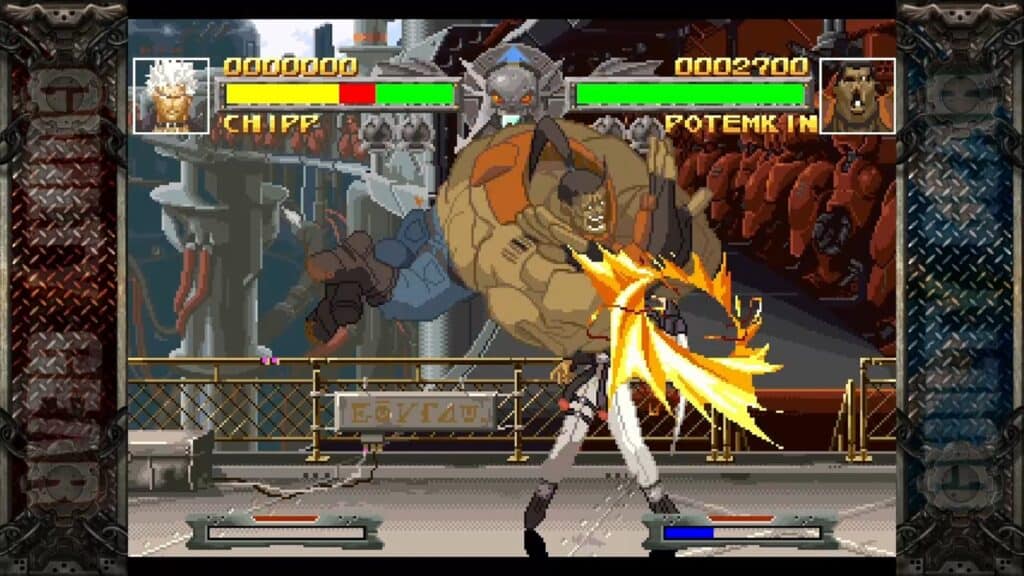
Guilty Gear XX #Reload (2003)
#Reload is the second update release for Guilty Gear XX. It’s available for NAOMI, PlayStation 2, Windows, Xbox 360, and PSP. The story and characters stay the same in this version as in XX. The update to the game makes the characters more balanced and fixes some issues.
Guilty Gear Isuka (2004)
Isuka is a spinoff game in the series, and it adds many new components. It’s available for Arcade, PlayStation 2, Windows, and Xbox. While it utilizes the same basic four-button system as many of the other games, its controls are unique among Guilty Gear games. One big change in this game is the ability for characters to turn, as they previously could not turn manually. Other additions include a customization mode, four-player versus, two new characters, and fighting areas in the foreground and background. There is also a Boost Mode, a side-scrolling 2D fighting side game for gaining experience, items, and health.
Guilty Gear XX Slash (2005)
That’s right; Guilty Gear XX Slash is another update to XX. It’s available for PlayStation 2 and NAOMI but is a Japan-only release. While this update doesn’t add anything to the story, there were adjustments to balance characters out. Slash also adds two new characters, including Order-Sol, who is Sol Badguy from the past.
Guilty Gear RoA (2006)
RoA stands for “Raid of Arms”. This entry in the series is only available on I-mode. Taking a page from the original Guilty Gear game, RoA goes back to using the Chaos Gauge and Instant Kill, which have been since changed for other games. The story centers around a mysterious scientist creating living weapons called Arms.
Guilty Gear Dust Strikers (2006)
Strikers is available on Nintendo DS. It features 21 playable characters and 20 story modes. This game is the first to include mini-games such as a challenge similar to billiards and balancing plates of food. An interesting note is the game’s end boss, Gig, a giant insect with an angel coming out of its bottom half.
Guilty Gear Judgement (2006)
Judgment is a side-scrolling beat ’em up game available on the PSP. There are 18 levels, and the gameplay is similar to the previously featured Boost Mode from Isuka. There is a two-player co-op mode and a survival mode where endless enemies attack. While Judgement may seem like the game’s theme, it’s actually the end boss’s name.
Guilty Gear XX Ʌ Core (2006)
The “Ʌ” symbol in the title stands for “Accent”. Core is another update to XX available on PlayStation 2, Wii, and NAOMI. While it’s a fighting game like XX, Core is one of the Guilty titles with no story mode. Its updates include new moves, character art, levels, and all-new voiceovers. Core introduces Force Breaks to the franchise, which are super specials that uses the Tension Gauge.
Guilty Gear 2: Overture (2007)
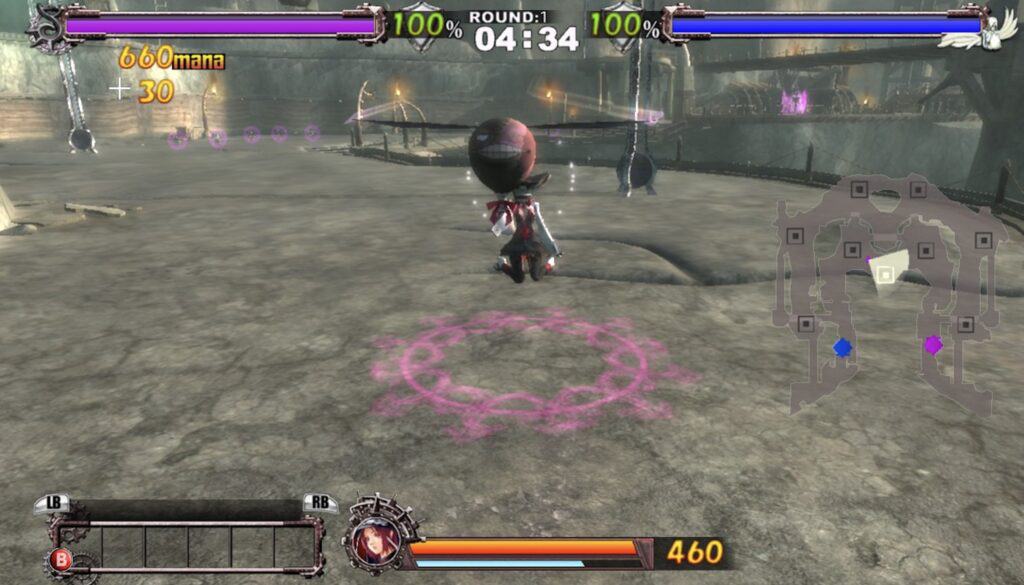
Overture is a unique entry in the series available on Xbox 360 and Windows. It is the only 3D action-based Guilty Gear game. Overture utilizes melee, real-time strategy, and online multiplayer, as your main character will have troops and a base of operations. While the gameplay is a departure from the rest of the series, this is a significant title in the franchise. It has a strong story and takes place five years after the first Guilty Gear. There are seven playable characters to choose from for your main character in primarily multiplayer battles, locally or online.
Guilty Gear XX Ʌ Core Plus (2008)
Here is yet another update to XX available on PlayStation 2, PlayStation 3, PSP, Wii, and Xbox 360. The gameplay is the same, but Plus does add to the story as it picks up where XX left off. The story centers around the familiar heroes fighting against the Post-War Administration Bureau and main baddie Crow.
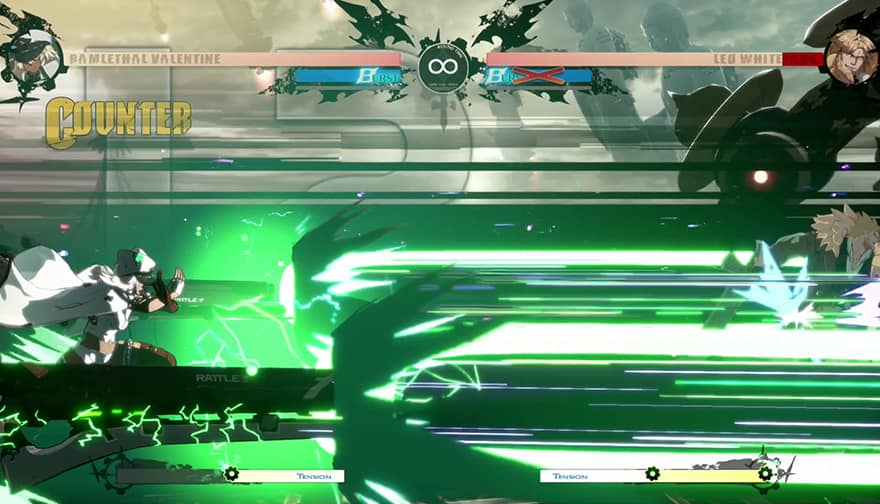
Pro Jumper! Guilty Gear Tangent!? (2010)
Tangent!? is another departure from the typical style of Guilty Gear games available exclusively on Nintendo DSI. It uniquely stars the mostly silent Chimaki, often seen as the mascot of the Gear games. Chimaki looks to be a small triangular-shaped dumpling creature with a towel. The game is a 2D side scroller with the goal of reaching a Hot Springs by dodging enemies and whacking them with a towel.
Guilty Gear XX Ʌ Core Plus R (2012)
Plus R is the fifth update to XX, released ten years after it. It’s available for the RingEdge 2, PlayStation Vita, PlayStation 3, Xbox 360, Switch, and Windows. It is an update to its predecessor and also update game, Core Plus. The story in the game stays the same, but there are updates to characters’ moves, bug fixes, and more playable characters.
Guilty Gear Vastedge XT (2013)
Vastedge XT is the only game of its type in the Guilty series. Rather than a fighting game, it is a slot machine-style game with the story playing out like show episodes. It’s partly only available on D-light, Android, and iOS because of this style. The game again stars Sol Badguy as its hero trying to get one of the Sacred Treasures he created away from the Conclave.
Guilty Gear Xrd -Sign- (2014)
Sign is the fifth major game in the series and takes place two years after the events of Overture. It’s available to play on RingEdge 2, PlayStation 3, PlayStation 4, and Windows. This entry returns to the standard fighting game style, structure, and controls of Guilty games before it, especially XX. This game introduces the Clash system, which occurs when two characters attack simultaneously. During this sequence, you can either cancel and re-attack or go into Danger Time with increased damage. The story focuses on explaining more of the series’ backstory, including Gears, magic, and the Crusade.
Guilty Gear Xrd -Revelator- (2015)
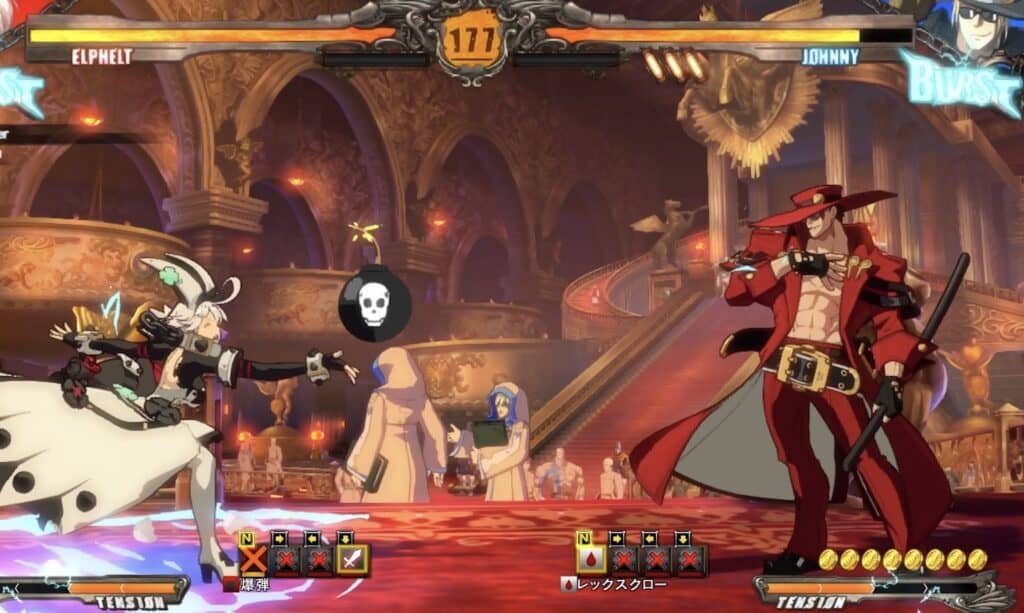
Revelator is the sixth major game in the franchise. The game connects with Sign, and together they help tell the third chapter of the frachise story. It’s available on RingEdge 2, PlayStation 3, PlayStation 4, and Windows. This game feels a lot like Sign and keeps the same controls. Revelator reintroduces Throw Breaks which occur when two players try to throw each other simultaneously. It adds in the Stylish Type: a special button for Overdrive Attacks, which are like super combos. It also adds in Burst Overdrives, which cost the whole Burst Gauge and do more damage than Overdrive Attacks but can restore the Burst Gauge when it connects with enemies. This time around, Sol and friends are trying to find the recently abducted series regular Ephelt Valentine.
Guilty Gear Xrd Rev 2 (2017)
Rev 2 is the update to Revelator available for PlayStation 3, PlayStation 4, and RingEdge 2. The game is mostly the same, aside from some balancing changes to the characters plus the addition of characters, Baiken, and Answer. This update does, however, add three new episodes to the story. Each stand-alone episode with different characters occurs directly after Revelator’s story.
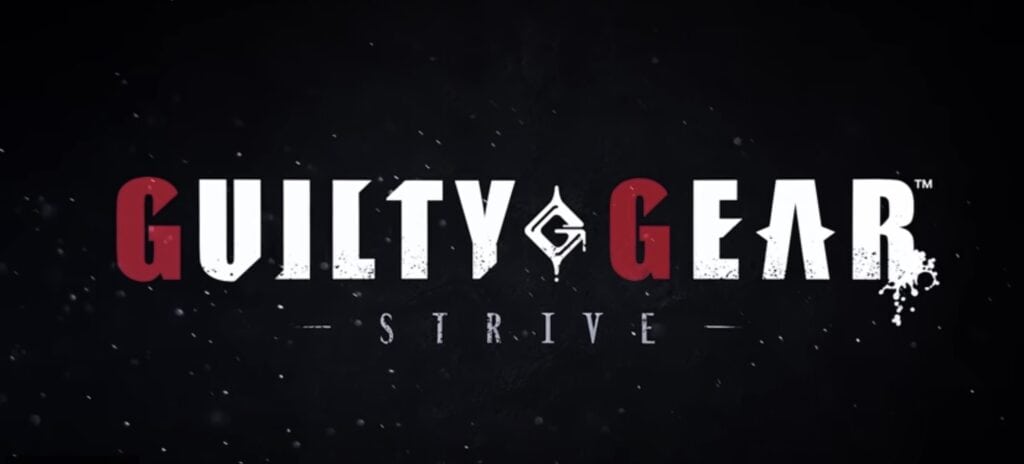
Guilty Gear Strive (2021)
The newest game in the Series and the seventh major entry is Strive. It’s widely accessible and available on PlayStation 4, PlayStation 5, Windows, arcade, Xbox One, and Xbox Series X|S. This game is not far removed from the original Guilty Gear and is a good starting place for beginners to the franchise or fighting games. It includes 25 playable characters and still features Sol Badguy as the hero and many other series regulars. New to this game is Wall Break, where characters are beaten up against a wall until it breaks and transports fighters to a new stage.
Guilty Gear Proper Order
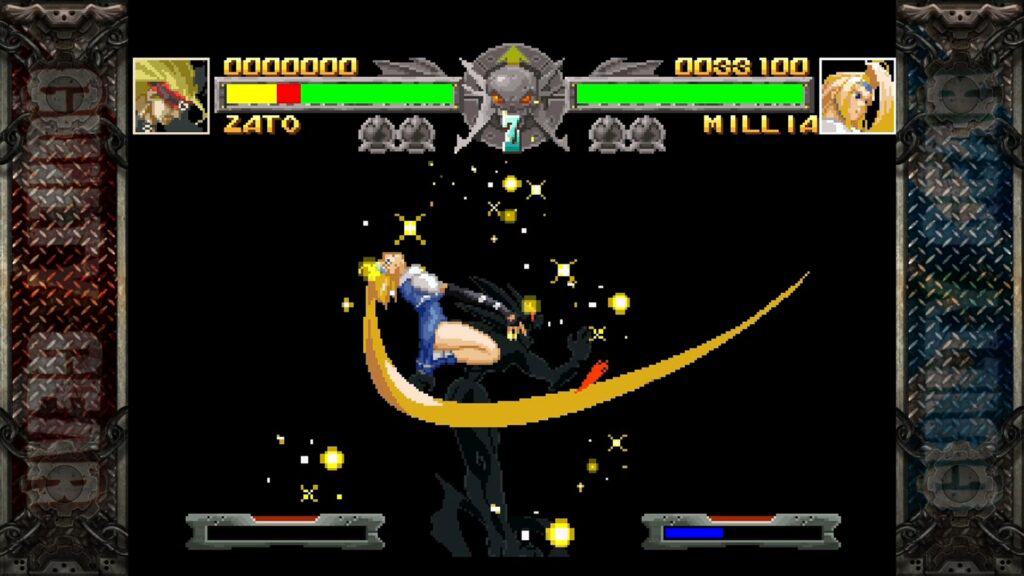
Due to the games chronological order being essentially the same as the release order, there isn’t really a right way to play them through. The games should be played in order of their release to get the complete Guilty Gear experience. You don’t necessarily have to play all the titles to understand the story and enjoy playing whatever game you choose, either. Some of the games have no story or story mode at all. The more minor releases can be confusing as they often only have minor changes, such as an additional playable character or more balanced-out character stats moves. Any Guilty Gear game is an excellent place to start, and Strive is a strong reboot for the series.
